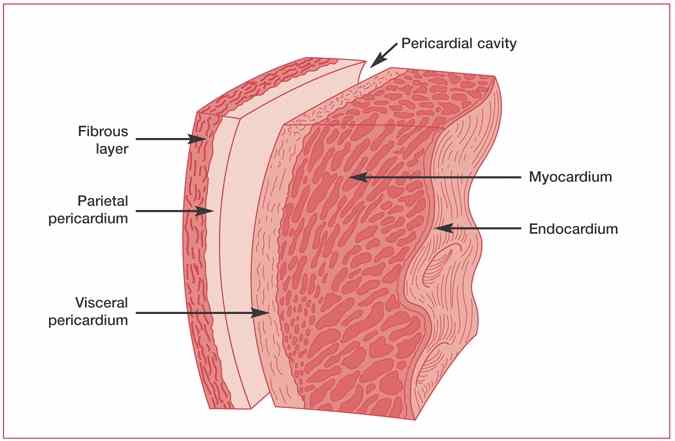What is the structure of the pericardium? What is its function?
1 Answer
Pericardium is a serous membrane which encloses the heart. Its function is to prevent overdistention of pumping heart.
Explanation:
Pericardial sac has 2 layers : fibrous and serous.
The outermost layer is the fibrous pericardium. It is made of tough fibrous connective tissue. It connects to the large blood vessels that enter and leave the heart (the venae cavae, aorta, pulmonary arteries, and veins). It also connects to the diaphragm muscle, and to the inside of the sternal wall of the thorax.
This layer acts as a protective layer and it prevents overdistention of the pumping heart by acting as a tough protective membrane sur-
rounding the heart. It also anchors the heart in the mediastinum.
The innermost layer of the pericardial sac is the serous layer or serous pericardium. This layer is thin and delicate. It is also known as the parietal layer of the pericardial sac.
The outermost layer of the heart has a confusing name of Visceral pericardium or epicardium. There is a small space between epicardium and serous layer of pericardial sac. It is called pericardial cavity, which contains pericardial fluid. The fluid prevents friction as the heart pumps blood.
The pericardial sac has two layers but pericardium has three (visceral layer included).
The layers of pericardium and pericardial cavity :


